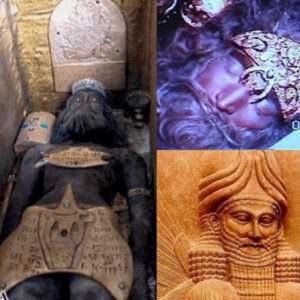For centuries, the mysterious Sumerian tablets have captivated the minds of archaeologists and historians worldwide, chronicling the tales of the Anunnaki—a race of colossal extraterrestrial beings believed to have once visited our planet.
According to these ancient inscriptions, the Anunnaki purportedly engaged in genetic experiments by combining their own DNA with that of early humans, aiming to create a workforce capable of mining Earth’s precious reserves, particularly gold. While scattered artifacts hinting at the presence of the Anunnaki have surfaced sporadically throughout history, tangible evidence of their existence has remained elusive.

In a remarkable turn of events, a team of researchers has recently unearthed what is believed to be a burial site dating back a staggering 12,000 years, attributed to the enigmatic Anunnaki, in the heart of Iran. This groundbreaking discovery has reverberated across the archaeological realm, as experts meticulously validated the site’s authenticity through intensive scrutiny and analysis.
The excavation of this ancient burial ground provides a rare glimpse into the possibility of the Anunnaki’s once tangible presence on Earth, shedding light on their enigmatic legacy and the profound impact they may have wielded in shaping early human civilizations. The careful examination of the unearthed remains and artifacts offers tantalizing clues into the rituals and customs of this advanced extraterrestrial race, fueling speculation and debate among scholars and enthusiasts alike.
The significance of this discovery cannot be overstated, as it opens up a treasure trove of new questions and avenues of exploration into our planet’s distant past. As researchers continue to unravel the secrets hidden within this remarkable archaeological site, the narrative of the Anunnaki and their alleged involvement in humanity’s ancient history may undergo a profound shift, prompting a reevaluation of our understanding of our origins and the role of otherworldly beings in shaping our world.





